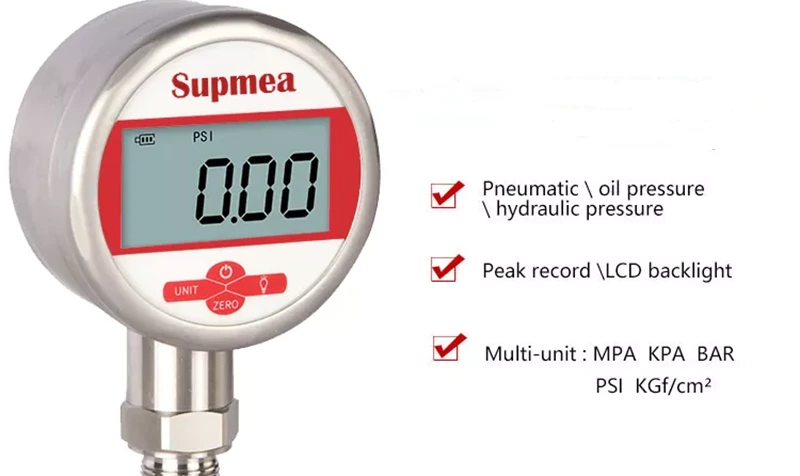5 Steps For Pressure Gauge Calibration
What is calibration?
Calibration is the process of comparing the output of a measuring instrument or device with a reference standard to determine any deviations from the standard and making necessary adjustments to bring the instrument into alignment with the standard. It is a critical process in ensuring the accuracy and reliability of measurement instruments, particularly in fields such as engineering, manufacturing, and scientific research.
Calibration can be performed on a variety of instruments, including pressure gauges, thermometers, flow meters, and scales, among others. The process typically involves a series of measurements at various points along the instrument's range of operation, with adjustments made to bring the readings into alignment with the reference standard.
Steps For Pressure Gauge Calibration
Here are the 5 steps for pressure gauge calibration:
- Preparation: Before calibration, ensure that the pressure gauge is clean and free from any visible damage or debris. Also, identify the reference standard and ensure that it is calibrated and traceable to a recognized standard.
- Establish the Calibration Range: Determine the upper and lower limits of the gauge, and then set up the calibration equipment to cover the calibration range.
- Calibration Procedure: Connect the pressure gauge to the reference standard and record the reading. Compare the reading with the reference standard and adjust if necessary. Repeat the process at various points within the calibration range.
- Record Keeping: Record all the data obtained during the calibration process, including the calibration range, reference standard used, and any adjustments made. This record should also include the date, time, and technician responsible for the calibration.
- Certificate of Calibration: Issue a certificate of calibration to confirm that the gauge has been calibrated within its specified range and is fit for use. The certificate should include the calibration range, reference standard used, and any adjustments made, as well as the date and technician responsible for the calibration.
Why calibrate the pressure gauge?
Calibrating a pressure gauge ensures that its readings are accurate and reliable. Over time, a pressure gauge can become less accurate due to factors such as wear and tear, exposure to extreme temperatures or humidity, and mechanical shock or vibration. If a pressure gauge is not calibrated regularly, it may produce incorrect readings, which can lead to safety hazards, equipment damage, and costly production errors. By calibrating a pressure gauge, its accuracy and reliability can be verified and any necessary adjustments can be made to ensure it is working correctly.
When to calibrate the pressure gauge?
It is recommended to calibrate pressure gauges periodically, typically every 6 to 12 months, depending on the frequency of use and the environmental conditions in which they are used. However, there are certain events that can indicate the need for immediate calibration, such as dropping the gauge, exposing it to extreme temperature or pressure, or experiencing unusual readings. Additionally, any time a gauge is repaired or adjusted, it should be recalibrated to ensure accurate measurements.
How to calibrate your pressure gauge?
Calibrating a pressure gauge involves comparing the gauge's readings to a known and traceable standard, and making any necessary adjustments to ensure accurate and reliable readings. Here are the basic steps to calibrate a pressure gauge:
- Gather the necessary equipment: a calibration standard, such as a deadweight tester or a digital pressure calibrator, and any accessories needed to connect the gauge to the standard.
- Set up the calibration equipment and connect the pressure gauge to be calibrated.
- Apply a known and stable pressure to the gauge, as specified by the calibration standard, and record the reading on the gauge.
- Compare the reading on the gauge to the reading on the calibration standard, and determine if any adjustments need to be made.
- If adjustments are needed, adjust the gauge's pointer or digital display to match the calibration standard's reading.
Repeat steps 3-5 for at least two additional pressure points within the gauge's range.
After completing the calibration, document the results and provide a calibration certificate as evidence of the gauge's accuracy.
It's important to note that some pressure gauges may require special considerations or procedures for calibration, such as temperature compensation or multiple adjustments for different pressure ranges. It's recommended to follow the manufacturer's instructions and guidelines for calibrating your specific pressure gauge.
How often should a pressure gauge be calibrated?
The frequency of pressure gauge calibration depends on various factors, including the accuracy requirements of the process, the operating conditions of the gauge, and the manufacturer's recommendations. Some industry standards recommend that pressure gauges be calibrated annually, while others suggest a shorter or longer interval depending on the specific application.
In general, it is recommended to calibrate pressure gauges at least once a year, and more frequently if the gauge is subjected to harsh conditions such as high vibration, extreme temperature, or exposure to corrosive substances. Regular calibration helps ensure that the gauge is accurate and reliable, which is essential for maintaining product quality, process efficiency, and safety.




